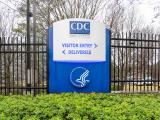Feb 2, 2009 CIDRAP News President Barack Obama called today for a "complete review" of the operations of the US Food and Drug Administration (FDA) in the wake of the ongoing outbreak of Salmonella in peanuts and peanut butter.
"At bare minimum, we should be able to count on our government keeping our kids safe when they eat peanut butter," he told Matt Lauer of the "Today" show in an interview aired this morning and a transcript released by NBC News. "That's what [younger daughter] Sasha eats for lunch probably three times a week. I don't wanna have to worry about whether she's gonna get sick as a consequence."
In calling for the review, President Obama is likely to hearten activists who have been pushing for reform of the nation's food safety system. Overlapping coalitions of members of Congress, policy think tanks, and a substantial grassroots movement, spurred by repeated national foodborne epidemics, have been pressing the new administration to enact change at the FDA, which shares food-safety duties with the Department of Agriculture (USDA).
Monday's announcement was Obama's clearest statement yet on food safety. Limited reform was part of his campaign platform, which said in part, "The USDA and FDA need more authority to issue and enforce recalls for contaminated food." He also introduced a food-safety bill into the Senate while campaigning last July.
There is no specific food-safety policy language in the new administration's agenda, listed at WhiteHouse.gov. Two days after the election, though, senior campaign adviser Neera Tanden told the Associated Press: "[Obama] thinks this is a fundamental role of government to ensure that people's food is safe and he has been concerned that we are not in a position to ensure that."
2008 outbreak was catalyst
Many of the calls for change were inspired by last summer's 3-month-long Salmonella Saintpaul outbreak, which sickened more than 1,400 people before the culprit food, fresh hot peppers, was identified (and 6 weeks after the culprit food was misidentified as tomatoes). They have been renewed with the current Salmonella Typhimurium outbreak centered on institutional peanut butter and peanut paste that is a component of processed food.
The day after the inauguration, the Government Accountability Office (GAO) released a set of "high risk" issues that it recommended the new administration address immediately. "Revamping Federal Oversight of Food Safety" was on the list.
That recommendation joins those made in December by the Institute of Medicine (IOM) in the report "HHS in the 21st Century: Charting a New Course for a Healthier America," which proposes unifying all federal food safety effortscurrently diffused across 12 agencies, including the USDAwithin the FDA.
The agencies' prescriptions back up repeated efforts by some members of Congress, notably Sen. Richard J. Durbin, D-Ill., and Rep. Rosa DeLauro, D-Conn., who several times have proposed creating a single new food agency out of the food-safety system's many parts.
Those efforts have been matched by more general calls from citizens for revamped food policy in the new government. They range from New York Times columnist Nicholas D. Kristof, who was raised on a family farm, proposing a new Cabinet position, "Secretary of Food," to author and University of California, Berkeley professor Michael Pollan publishing an open letter urging food reform as a prerequisite to action on healthcare reform, energy independence, and climate change.
After the election, more than 58,000 people signed an online petition asking that the new secretary of agriculture be a champion of sustainable agriculture.
Push for reform goes back years
Analysts of food safety and FDA operations, including some within the FDA itself, have been pressing for change for a while.
In 2007, a subcommittee of the FDA's own Science Board, the advisory group to the FDA commissioner, warned starkly: "The nation's food supply is at risk. Crisis management in FDA's two food safety centers, Center for Food Safety and Applied Nutrition and Center for Veterinary Medicine, has drawn attention and resources away from FDA's ability to develop the science base and infrastructure needed to efficiently support innovation in the food industry, provide effective routine surveillance, and conduct emergency outbreak investigation activities to protect the food supply."
Calls for change in the food-safety system are not new: Ten years ago, the IOM report "Ensuring Safe Food: From Production to Consumption" called for naming a national food-safety official, updating statutory authority under a single food-safety law, and revamping organization of food safety into one administrative structure, either a new agency or a council of representatives from the existing agencies.
Presciently, given that its recommendations were ignored for a decade, the report said, "Food safety in the United States lacks integrated Congressional oversight . . . and sustained political support."
Ten years on, much of the reform effort echoes those recommendations.
In November, the Produce Safety Project of Georgetown University (funded by the Pew Charitable Trusts) issued an after-action report on the Salmonella Saintpaul outbreak that said the FDA has not exercised its authority to set mandatory, preventive safety standards for produce, though it has done so for seafood and eggs.
"Our argument to the Obama administration would be that it is long past time to act on this issue," Jim O'Hara, the project's director and a former associate commissioner at the FDA, said in an interview.
Seeking one food-safety agency
Ultimately, those currently calling for reform hope to see a new federal food-safety agency that would unite the Food Safety and Inspection Service (FSIS) within USDA, which oversees meat and poultry production, with the food functions of several FDA departments that oversee everything else.
In a budget imbalance that dates well back in the 20th centurybefore consolidation greatly reduced the number of US family farms and before processed food became an important marketplace sectorFDA is responsible for regulating 85% of food products in the United States, but has only half the budget and one-fourth the staff of the USDA FSIS, which accounts for the other 15%.
"Within both FDA and USDA, food safety is not the top priority," the nonpartisan, nonprofit organization Trust for America's Health (TFAH) said in an April 2008 report called "Fixing Food Safety: Protecting America's Food from Farm-to-Fork." "At FDA, pharmaceuticals and medical devicesthe 'drug' part of the Food and Drug Administrationreceive priority attention. At USDA the focus is on promoting US farm commodities abroad and helping farmers and agribusiness at home."
Interim steps suggested
But because rewiring so many components could take a whilebringing together every food-safety function could potentially wrap in even foodborne epidemiology at the Centers for Disease Control and Prevention (CDC)those pressing for change have advanced interim steps.
"The disruption of moving to a government-wide single food safety agency, in a very short period of time, may actually weaken things for a while rather than strengthen them," Dr. Jeffrey Levi, executive director of TFAH, said in an interview. "So our hope is that the first step in the process is creating a separate food safety agency within the Department of Health and Human Services (HHS), to strengthen systems that are already in place."
An essential part of that change would be naming one official within HHS who would have line authority over food safety functions. No such position exists now; food safety is a midlevel responsibility within the various HHS agencies, putting it far away from any policy-making power.
"It should be at the highest level possible, preferably someone who reports to the secretary of HHS," O'Hara said. "It needs to be seen as a priority of the department."
Ultimately, fresh attention to food safety will require not just new agency architecture, but a fresh stream of funding sent toward the states, Levi underlined. The Salmonella outbreaks have pointed up different levels of capability among state health departments: The Minnesota Department of Health identified the correct culprit food in both cases, challenging epidemiology done in other states and at the CDC.
Varied foodborne expertise in states "isn't from lack of desire or commitment on the part of state health departments; it really is as simple as not having the resources or the staff," Levi said. "This core public health function has been chronically underfunded."
See also:
Obama interview transcript
http://www.msnbc.msn.com/id/28975726/
Obama campaign platform
http://my.barackobama.com/page/content/ruralplan/
Obama administration rural and farm agenda
http://www.whitehouse.gov/agenda/rural/
GAO's 2009 list of high-risk issues
http://www.gao.gov/new.items/d09271.pdf
IOM report "HHS in the 21st Century: Charting a New Course for a Healthier America"
http://www.nap.edu/catalog.php?record_id=12513
Nicholas D. Kristof, "Obama's 'Secretary of Food'?"
http://www.nytimes.com/2008/12/11/opinion/11kristof.html
Michael Pollan letter: "Letter to the Farmer-in-Chief"
http://www.nytimes.com/2008/10/12/magazine/12policy-t.html
Online petition, "Introducing the Sustainable Dozen!"
www.FoodDemocracyNow.org
FDA Science Board report "FDA Science and Mission at Risk: Report of the Subcommittee on Science and Technology"
http://www.fda.gov/ohrms/dockets/ac/07/briefing/2007-4329b_02_01_FDA%20Report%20on%20Science%20and%20Technology.pdf>
IOM Report "Ensuring Safe Food: From Production to Consumption"
http://www.nap.edu/catalog.php?record_id=6163
Produce Safety Project report "Breakdown: Lessons to Be Learned from the 2008 Salmonella Saintpaul Outbreak"
http://www.producesafetyproject.org/reports?id=0001
TFAH report "Fixing Food Safety: Protecting America's Food from Farm-to-Fork"
http://healthyamericans.org/reports/foodsafety08/FoodSafety08.pdf



















